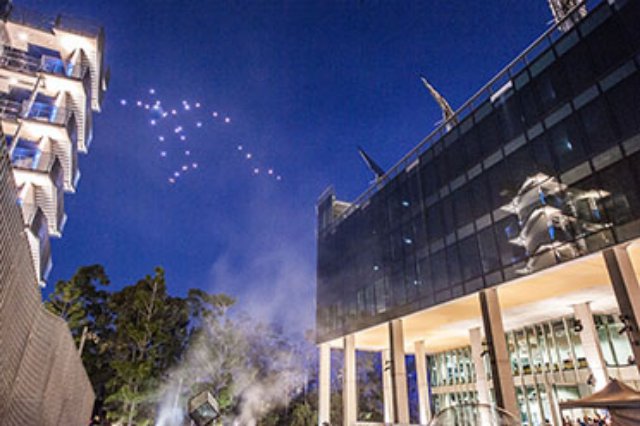The Australian Research Centre for Aerospace Automation (ARCAA), lead by Queensland University of Technology, has been commissioned by Thales, Australia’s leading provider of Air Traffic Management (ATM) systems, to advance Australian research into the implications for air traffic management of Unmanned Aircraft Systems (UAS) in non-segregated civil airspace.ARCAA Director, Professor Duncan Campbell, from QUT’s Science and Engineering Faculty, said ARCAA would undertake a scoping study to identify the key challenges associated with the routine operation of UAS within the Australian airspace management system.
“We will do this in collaboration with the Wackett Aerospace Research Centre at RMIT University,” he said.
“We will identify existing UAS airspace integration work being conducted elsewhere in the world, including projects being conducted by Thales, and pin-point any operational concepts specific to operating UAS in Australia’s distinctive environment.
“As well, the challenges of responsibly operating UAS within the current airspace system will be identified and a proposal put forward for a full research program to move the research forward.”
Thales CEO Chris Jenkins said that as a leader in UAS research, ARCAA was ideally suited to undertake the study.
“While UAS are yet to enter civil airspace on a routine basis, they will become more prevalent,” Mr Jenkins said.
“UAS are moving at a rapid pace beyond the military sphere into the realm of governments and the private sector. Their use will grow in the future, and air traffic management systems need to be ready to cater for them.
“As the prime contractor for Australia’s air traffic management system and a major exporter of the technology, we are uniquely placed to work closely with ARCAA and other stakeholders to progress the integration of UAS into the existing ATM framework.
“This valuable research builds on the significant ATM investment we have made in Australia over two decades, and extends the reach of our Centre for Advanced Studies in ATM (CASIA), based in Melbourne.”
Professor Campbell said the research was being undertaken concurrently with Project ResQu, a $7 million collaborative research project between QUT, CSIRO, Boeing Research & Technology -Australia, Insitu Pacific Ltd and co-funded by the Queensland Government.
He said ARCAA was well advanced in research to address key hurdles to UAS’ ability to fly in civil airspace.
“We are working on projects to enable UAS to detect and avoid other aircraft and to automatically land safely in an emergency,” Professor Campbell said.
“Overcoming these technical hurdles will allow us to move one step closer to a fully integrated airspace where UAS will be able to be utilised for many new civilian applications,” Professor Campbell said.
He said UAS had the potential to provide great benefits, particularly in times of disaster, when the aircraft could be sent to scope bushfires or floods, and provide real-time vision to emergency response managers.
Photo: A swarm of 30 small UAS took to the sky over QUT as part of the university’s robotics extravaganza, Robotronica
Source: Press Release

